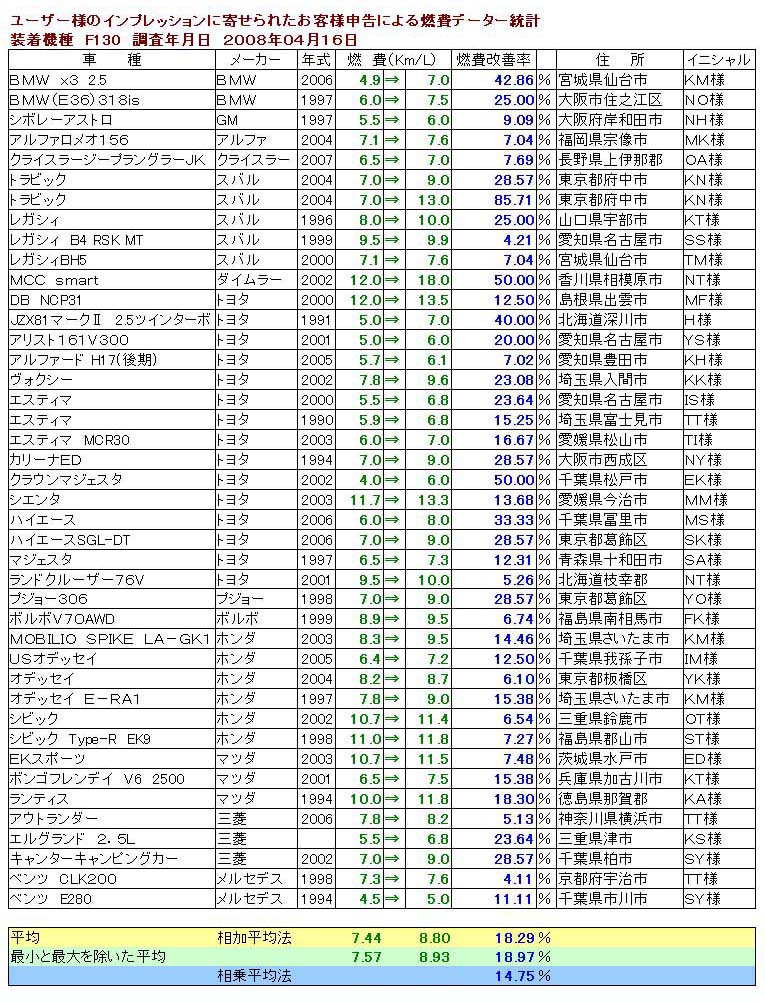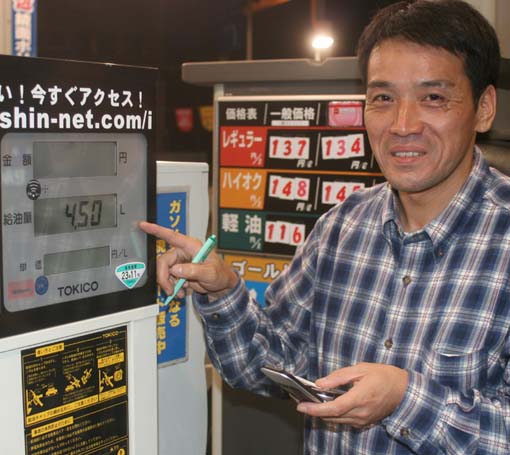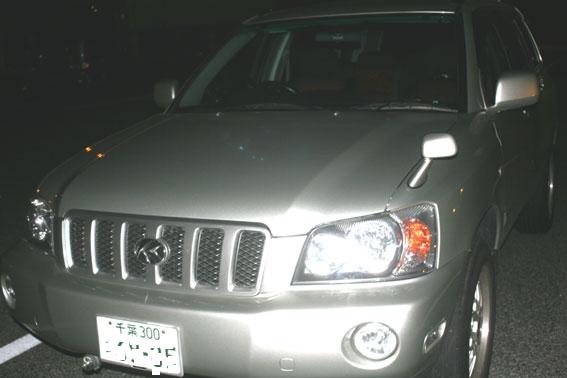|
ROSSAM Product measurement data
|
| Elgrand COCO F4200X 2 units, 100km/h, constant ground fuel consumption test
|
We conducted the measurement free of charge at the request of the customer.
The Elgrand weighs 2,060 kg, and COCO's own measurement showed 7.047 km/L => 8.326 km/L (fuel efficiency improvement rate: 18%), but they wanted more precise measurement. 5 hours of measurement resulted in
100 km/h fuel efficiency Not measured With 9.17Km/L
100km Fuel consumption at fixed location With 11.55Km/L (Fuel consumption improvement rate: 25.9%)
The same good results were obtained by monitoring with a fuel consumption meter. At the same time, we also measured 0-400m, mid-range acceleration, torque, and horsepower with a G-measuring device.
The results were satisfactory for such a large car body.
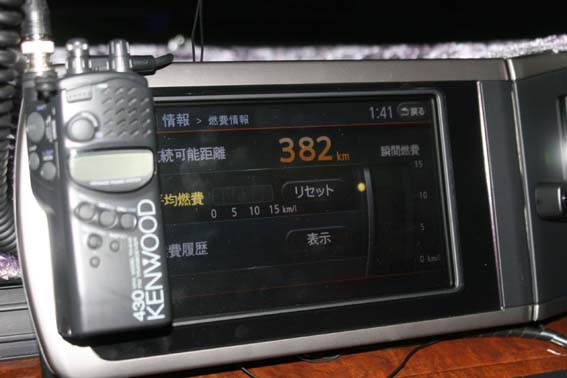 |
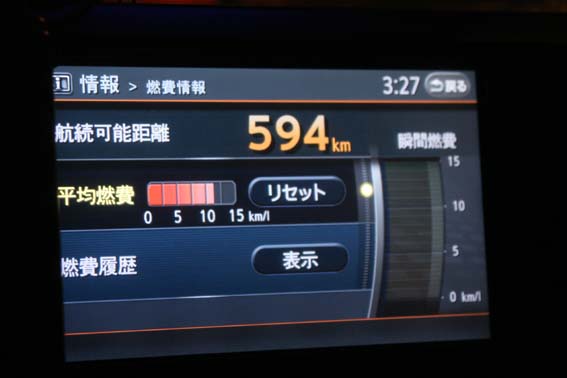 |
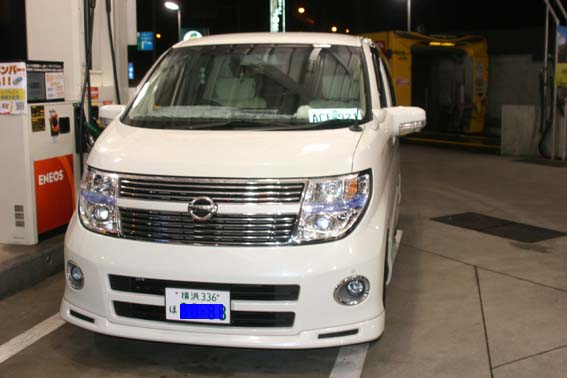 |
| Stock fuel consumption gauge data before the start of the test |
Genuine fuel consumption gauge data at the end of the installation test |
|
During the test run, the cruising range indicated by the fuel consumption gauge increased from
384 km/L to 594 km/L. |
|
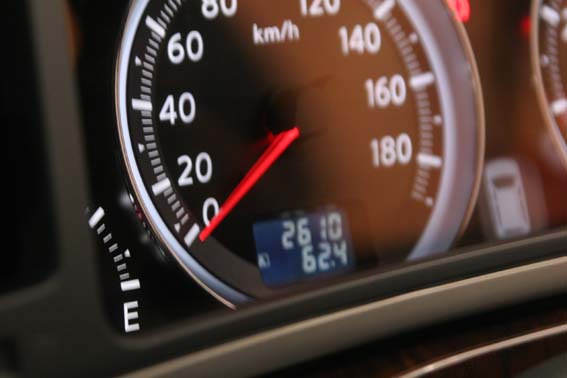 |
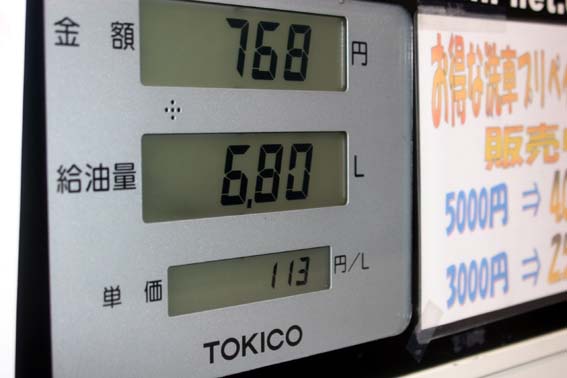 |
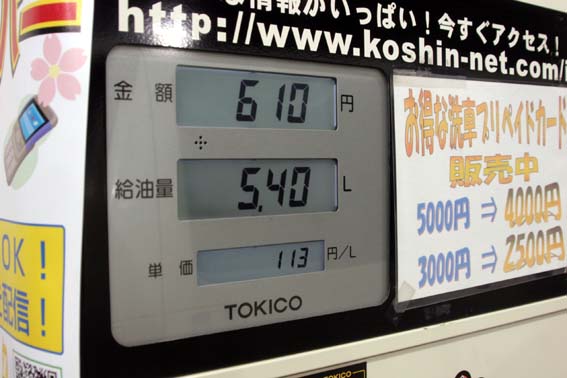 |
| Driving distance 62.4Km |
Before installation 6.80L |
Two F4200X units After installation 5.4L 25.9% increase in fuel consumption |
|
|
|
|
| MACTOOL service car 3000CC diesel vehicle 80Km/surface mileage test
|
MACTOOL, a famous overseas tool manufacturer, provided us with a Chevrolet service truck equipped with a 3000cc diesel engine, and we conducted a fuel efficiency test of the diesel vehicle on the Kanto Expressway. Although the service truck is used daily, it has never run more than 5 kilometers per liter, and the total weight of the truck is quite heavy because it is loaded with tools made of metal.
There is a great deal of publicity about reducing fuel consumption at business offices that own a large number of business vehicles, but even a mere 7% is a serious problem for many companies with more than 100 vehicles and monthly fuel costs exceeding 10 million yen, where the actual fuel consumption is said to be 2 km to 5 km at best. Even a 7% reduction in fuel consumption would result in a huge amount of savings and should not be ignored. |
| Model |
Manufacturer |
Model |
Drivetrain |
Displacement |
M/AT |
Fuel |
|
Fuel consumption |
|
| Not installed |
Chevrolet |
MACTOOL
Service Car |
FR |
FR 3000 |
AT |
Light oil |
-Diesel fuel |
5.45Km/L |
|
| F4200 |
Chevrolet |
↓↓↓↓↓↓↓↓ |
↓↓ |
↓↓ |
↓↓ |
↓↓ |
↓ ↓ ↓ ↓ ↓ ↓ ↓ ↓ ↓ ↓ ↓ |
5.84Km/L |
Up 7 |
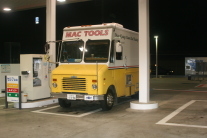 |
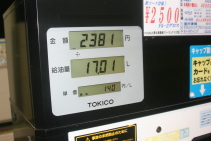 |
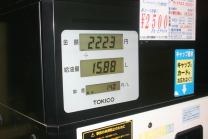 |
|
Not installed 80Km fixed location driving at 92.8Km
|
Installed 15.88 liters per 80 km (92.82 km) of driving at a constant speed of 80 km/hr. 7% increase
|
Supplemental information
The battery in the test vehicle had a voltage of 12.7V, but it was five years old and almost at the end of its useful life. Normally, with the F4200 installed, the voltage would increase after about 30 minutes of driving, but in the case of a battery with reduced charging capacity like this, the alternator repeatedly generates unnecessary power, which increases magnetic resistance and considerably worsens fuel efficiency. It can be inferred that the test results would have been much better if a normal battery had been installed. Even for large trucks, such as a 16-ton truck, it is possible to achieve better fuel economy than in this test if two F4200 units are installed. Also, we have received a report of a Toyota Corolla van diesel that ran more than 1,000 km on a full tank of 50 liters for the first time, which is a very exciting result.
|
|
Mazda RX-8 F4200 Performance Comparison Normal car
|
In the previous test, we tested the RX-8 with the muffler tuning, but the improvement effect was so great that it was expected that the torque performance at low speeds was considerably reduced. Therefore, this time we conducted a fuel consumption test on an RX-8 with completely stock specifications.
The results showed a 22% increase in fuel economy. The vehicle this time was a rental car, so it had regular fuel in it, even though it was a high-octane spec car, The regular fuel consumption was 12% higher than the high octane. The result was 12% higher than the previous result. After that, we drove about 300 km on the highway with the AT fixed at 2nd gear, emptied the tank completely, and filled it with high-octane fuel for this test. This proves that whether the car is tuned or stock, the EDLC will definitely improve fuel economy.
(We recommend that RX-8 owners strictly follow the manufacturer's high-octane fuel economy standards.)
|
| Model |
Manufacturer |
Model |
Drivetrain |
Year |
M/AT |
M/AT , M/AT |
|
Fuel consumption |
|
| Not installed |
Mazda |
RX-8 |
FR |
H17-3 |
AT |
High octane |
High-octane |
10.04Km/L |
|
| F4200 |
↓ ↓ ↓ ↓ ↓ ↓ |
↓ ↓ |
↓ ↓ |
↓↓↓ |
↓↓↓↓↓↓↓↓↓↓↓↓↓↓↓↓↓↓↓↓ |
↓ ↓ ↓ ↓ ↓ ↓ ↓ ↓ ↓ ↓ ↓ ↓ |
↓ ↓ ↓ ↓ ↓ ↓ ↓ ↓ ↓ ↓ ↓ |
12.86Km/L |
22% increase |
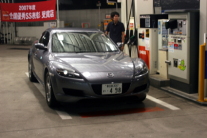 |
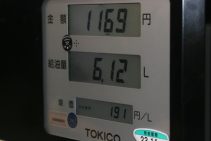 |
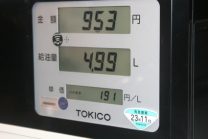 |
| RX-8 AT specification |
Not installed 80Km constant ground driving at 64.2Km
6.12 liters
|
Installed 80Km on the road, 64.2Km on the road
4.99 liters 22% increase
|
|
| Mazda RX-8 F130+ F4200 Performance Comparison 80Km/h Fuel Consumption Test Challenge! Modified car
|
| Model |
Manufacturer |
Model |
Drivetrain |
Year |
M/AT |
M/AT , M/AT |
|
Fuel consumption |
|
| Not installed |
Mazda |
RX-8 |
FR |
H15 |
6MT |
High octane |
-High octane |
7.84km/L |
|
| F130 |
↓↓↓↓↓↓↓↓↓ |
↓ ↓ ↓ ↓ |
↓ ↓ |
↓↓↓ |
↓↓↓↓↓↓↓↓↓↓↓↓↓↓↓↓↓↓↓↓↓ |
↓ ↓ ↓ ↓ ↓ ↓ ↓ ↓ ↓ ↓ ↓ ↓ |
-8.94km/L |
8.94km/L |
26% increase |
| F4200 |
↓ - 8.94km/L |
↓ ↓ |
↓↓ |
↓↓ |
↓↓↓↓↓↓↓↓↓↓↓↓↓↓↓↓↓↓↓↓ |
↓ ↓ ↓ ↓ ↓ ↓ ↓ ↓ ↓ ↓ ↓ ↓ |
↓ ↓ ↓ ↓ ↓ ↓ ↓ ↓ ↓ ↓ ↓ |
11.98km/L |
52% increase |
Mr. S, an actor who had tested the F130 last time, requested to see the difference in power with the new F4200, so we held the driving test again. All the participants were amazed at how well the F130 and the F4200 worked together, and the fuel consumption was also amazing. This record exceeds the normal fuel economy of the Lexus GS450 we tested last time. If you drive 10,000 km with this fuel efficiency,
without installation 10000 km/L ÷ 7.84 km/L = 1275L
without installation 10000 km/L ÷ 11.98 km/L = 834L
the difference will be 441L, which is an amazing 70,560 yen saved just by driving 10,000 km even if 1L = 160 yen.
We were able to achieve the same level of fuel efficiency as a reciprocating engine, even though it is a rotary engine, and Mr. S was very satisfied.
We also received a comment that the F130+PDB had the best response when driven, but our expectation was that the PDB would increase the potential difference and improve response, but would lose to the F4200 in fuel efficiency. However, we expected that the PDB would increase the response by increasing the potential difference, but it would lose to the F4200 in fuel economy.
Comment from Mr. S
"Thank you very much for testing until dawn.
I was surprised to see better results than last time. I didn't expect to get "almost 12km per liter".
This test was conducted on an RX-8 that has been modified with a sports muffler. Therefore, it does not represent the fuel economy of a stock RX-8. The RX-8 with stock specs shows 12% improvement for regular and 22% improvement for premium. (Fuel economy at 80 km/h on a fixed road at F4200, our experimental value)
|
| Mazda RX-8 + F130 + RC170 + Panasonic Chaos battery 80km/h fuel consumption test at a fixed location! Modified car
|
| Model |
Manufacturer |
Model |
Drivetrain |
Year |
M/AT |
M/AT , M/AT |
|
Fuel consumption |
|
| Not installed |
Mazda |
RX-8 |
FR |
H15 |
6MT |
High octane |
-High octane |
7.84km/L |
|
| F130+RC170 |
↓↓ |
↓ ↓ ↓ |
↓ ↓ |
↓↓ |
↓↓↓↓↓↓↓↓↓↓↓↓↓↓↓↓↓↓↓↓↓ |
↓ ↓ ↓ ↓ ↓ ↓ ↓ ↓ ↓ ↓ ↓ ↓ |
-10.64Km/L |
10.64Km/L |
35% increase |
The rotary engine is said to have low torque, high RPM, and ignition is vital, but this time, Mr. S, an actor, brought in his beloved RX-8 and measured the fuel consumption over 80 km on a fixed road. Since the muffler had been replaced, the torque at low speed seemed to be low and the fuel consumption was poor, so we recommended the F130 pure silver terminal. The first time we measured the fuel consumption of the car, all the participants said, "The rotary is indeed very fuel-efficient. As soon as we started driving, Mr. S said, "It's easier to drive now." While driving, the needle of the fuel gauge dropped less and less, and we could see that the fuel consumption had clearly improved. The fuel consumption was up a whopping 35%, and once again all the participants were amazed, saying, "I can't believe it, it's almost as fuel efficient as a reciprocating engine. The fact that the rotary engine and EDLC were so well matched was very valuable data for us.
 |
 |
The cockpit of Mr. S's favorite car
Unfortunately, he is a member of an entertainment agency, so his face was not shown, but he gave us permission to photograph only his arms. |
After returning home, we immediately received the following e-mail from Mr. S.
-----------E-mail from Ms. S. ---------
Thank you for staying late this time.
I was really surprised because I didn't expect such a good effect.
I had 32.2 km on the way home, and my meter would normally drop about 1 memory, but this time it did not decrease.
Acceleration also seems to be smoother even when I step on the brake pedal, which would normally cause the car to stall. I feel that the car body has become lighter. As for the sound, we tried the F130 alone without the RC170, but the bass sound was more powerful and clearer with the RC170 installed.
|
This test was conducted on an RX-8 that had been modified with a sports muffler. Therefore, it does not show the fuel consumption of a stock RX-8. The RX-8 with stock specs shows 12% improvement for regular and 22% improvement for premium. (Fuel economy at 80 km/h on a fixed road at F4200, our experimental value)
|
| Lexus GS450 + F130 + GS Yuasa high performance battery 100km/h fuel consumption test on actual road
|
| Model |
Manufacturer |
Model |
Drivetrain |
Year |
M/AT |
M/AT , M/AT |
|
Fuel consumption |
|
| Not installed |
TOYOTA |
Lexus GS350 |
4WD |
H18 |
6AT |
High octane |
-High octane |
11.51km/L |
|
| F130 |
↓↓↓ |
F130 ↓ F130 ↓ F130 ↓ F130 ↓ F130 |
4WD |
↓ ↓ 4WD |
↓ ↓ 4WD |
↓ ↓ |
↓ ↓ ↓ ↓ ↓ ↓ ↓ ↓ ↓ ↓ ↓ |
12.52Km/L |
9% increase |
Mr. N from Tokyo wanted to confirm the performance of the F130 before purchasing it, so we decided to conduct a fuel efficiency test of the Lexus 3500cc, 4WD. As expected, fuel consumption increased by only 2% after 80 km of steady driving. The results of the 100 km/L steady-state test showed a 9% increase in fuel economy. This suggests that although it is usually difficult to see a difference in performance in a fixed-ground driving test, fuel efficiency is likely to increase when driving with a heavy load. This test was conducted late at night in unfavorable conditions with an outside temperature of 1°C. We believe that the fuel efficiency effect would have been even greater on a warmer day when the air density is thinner.
Mr. N was a bit indigested, as he thought that there could be a measurement error, as he had only obtained a 2% improvement in fuel efficiency during the previous test. The second test was also very valuable data for us. In the second test, we also conducted a test of the EDLC stand-alone battery that we are developing at the same time. The second test was conducted in parallel with a test of the EDLC stand-alone battery that we are developing. As a result, the car achieved 12.09 km/L compared to 12.52 km/L of the Lessus, and although the design itself is more than 18 years old, with 4/AT and a classic 3300 cc engine, the result was close to the Lessus with the latest technology.
|
| Toyota Kruger 3000cc + F130 + standard battery Fuel efficiency test at 80km/h on actual road conditions
|
| Model |
Manufacturer |
Model |
Drivetrain |
Year |
M/AT |
M/AT , M/AT |
|
Fuel consumption |
Fuel economy improvement rate |
| Not installed |
Toyota |
Kruger |
4WD |
H3 |
5AT |
REGULAR |
-11.59Km/L |
11.59Km/L |
-F130 |
| F130 |
↓↓ |
↓↓ - 11.59Km/L - F130 |
↓ ↓ |
↓↓ |
↓↓↓↓↓↓↓↓↓↓↓↓↓↓↓↓↓↓↓↓↓ |
↓ ↓ ↓ ↓ ↓ ↓ ↓ ↓ ↓ ↓ ↓ ↓ |
↓ ↓ ↓ ↓ ↓ ↓ ↓ ↓ ↓ ↓ ↓ |
13.44Km/L |
Up 15 |
|
|
Kruger owner Mr. T from Chiba prefecture and his beloved carup
He works at Narita Airport servicing jet aircraft.
|
It is natural for a 3000cc Kruger, which weighs over 2 tons when fully loaded, to have poor fuel economy when it is a 4-wheel drive vehicle, but this time, the owner came to our office to conduct a test in which two people were in the vehicle and the owner followed the vehicle between Toda and Kawagoe Interchange with the autocruise vehicle leading. The owner was very satisfied with the 15% increase in fuel economy with the F130, even with the air conditioning on. (The owner of the car said that he usually uses regular fuel, so the test was conducted using regular fuel. If the car was running on high octane and the air conditioner was turned off, the results would have been even better.)
Toyota Kruger / Registration H14.11 / Model TA-MCU25W / Engine 1MZ (3000cc) /
Weight 1730kg / Gross weight 2005kg / Mileage 75000km
|
SVX3300cc Ultra-compact battery for motorcycle (3A) 80km/h actual fuel consumption test on a fixed road
|
| Model |
Manufacturer |
Model |
Drivetrain |
Year |
M/AT |
M/AT |
|
|
Fuel economy improvement rate |
| Not installed |
Subaru |
SVX |
4WD |
H14 |
4AT |
High octane |
-High octane |
12.45Km/L |
-F130 |
| F130 |
↓ ↓ |
↓↓ - 12.45Km/L - F130 |
↓ ↓ |
↓↓ |
↓↓↓↓↓↓↓↓↓↓↓↓↓↓↓↓↓↓↓↓↓ |
↓ ↓ ↓ ↓ ↓ ↓ ↓ ↓ ↓ ↓ ↓ ↓ |
↓ ↓ ↓ ↓ ↓ ↓ ↓ ↓ ↓ ↓ ↓ |
13.57Km/L |
9% increase |
| |
Supplemental information: Tested at 80 km/h in a fixed location with air conditioning and lights on, one passenger, 225 tires (2.2 kg air pressure), circuit driving, etc., assuming a smaller battery.
|
| SVX3300cc + Development prototype model CAP1 Fuel consumption test at 100km/h on a fixed road
|
| Model |
Manufacturer |
Model |
Drivetrain |
Year |
M/AT |
M/AT |
|
|
Fuel economy improvement rate |
| Not installed |
Subaru |
SVX |
4WD |
H7 |
4AT |
High octane |
-High octane |
11.84Km/L |
-CAP1 |
| CAP1 |
↓↓ |
↓ ↓ |
↓ ↓ |
↓ ↓ |
↓↓↓↓↓↓↓↓↓↓↓↓↓↓↓↓↓↓ |
↓ ↓ ↓ ↓ ↓ ↓ ↓ ↓ ↓ ↓ ↓ ↓ |
-14.75Km/L |
14.75Km/L |
24% increase |
| CAP1 Supplemental information: Local driving test 80 km/h, temperature 26°C, air conditioner, lights, audio system, lights on, 1 passenger, tires 225 (air pressure 2.2 kg) Easily exceeded Subaru's new car 60 km/h local data (no load). 40 km aerodynamic difference and other loads together suggest that future tests may be quite promising. In future tests, we can expect to see much better fuel economy.
|
| Eunos Roadster 1600cc Fuel Economy Test at 80 km/h on a fixed road
|
| Model |
Manufacturer |
Model |
Drivetrain |
Year |
M/AT |
M/AT |
|
|
Fuel economy improvement rate |
| Not installed |
Mazda |
Eunos |
FR |
H3 |
MT |
REGULAR |
-14.69Lm/L |
14.69Lm/L |
-F130 |
| F130 |
↓↓ |
|
↓↓ |
↓↓ |
↓↓ |
↓↓↓ |
↓ ↓ ↓ ↓ ↓ ↓ ↓ ↓ ↓ ↓ ↓ |
16.11Km/L |
10% increase |
| Supplemental information: On the test road test at 80 km/h, temperature 24°C, air conditioner, lights, audio system, lights on, 1 passenger, tires 185 (air pressure 2.0 kg), the car equipped with PDB was able to follow the lead car quite easily, and the compressor connection seemed to be quite smooth. The car without PDB had a much worse sound, especially in the audio system, but the car with PDB had a better sound response, and the monotonous driving test was enjoyable without being painful.
|
|
|
